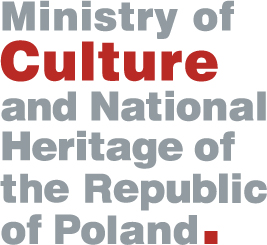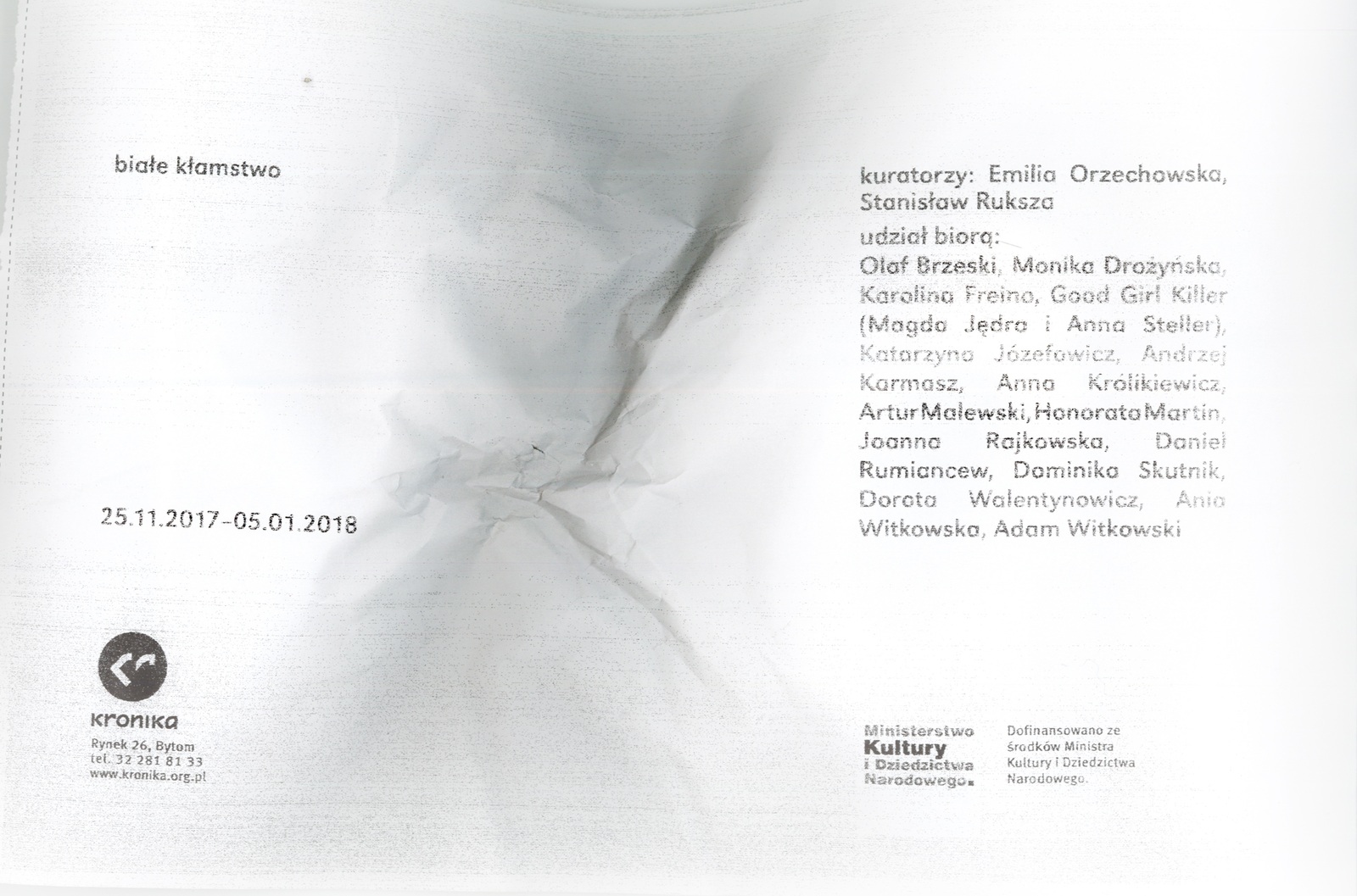artists: Olaf Brzeski, Monika Drożyńska, Karolina Freino, Good Girl Killer (Magda Jędra and Anna Steller), Katarzyna Józefowicz, Andrzej Karmasz, Anna Królikiewicz, Artur Malewski, Honorata Martin, Joanna Rajkowska, Daniel Rumiancew, Dominika Skutnik, Dorota Walentynowicz, Ania Witkowska, Adam Witkowski
Title phrase „white lie” can be explained as consciously telling the untruth (which is at odds with true conviction of the speaker), without giving intentions to the one that is being deceived. A white lie is meant to mislead, but it is not meant to hurt or harm. On the contrary, it is often meant to help (at least as far as the lying is concerned). It is the kind of a lie we tell others to make them feel better. These little, innocent deceptions and half-truths are not aimed at harming the other, but is it enough to save us from guilty conscience if we “dress” them in clean colours? We associate a lie with something bad. Nobody wants to be deceived, nobody wants to lie. But does the fact that we do not want to be deceived mean that we want to hear the truth? What does telling the truth and nothing but truth involve? What are the emotional, social and moral expenses? How does it influence our self-image? A medieval Rabbi Rashi believed that there can be an excess of fairness, and the full honesty is dangerous for the peaceful home life. White lies – concealments, oblique statements – prove that certain level of dishonesty is necessary in the society.
Authors together with creators have conducted a type of investigation, an inquiry aimed at examining certain phenomena and situations from a distance or through negation. At the same time, it is a real experience as in the description of “the untruth” certain “truth” of materials, “truth” of a work conducted, “truth” of thoughts and emotions Is always involved. The exhibition itself is a sign, an imprint, which “happens” both in the gallery space and in the spectators’ consciousness. The topic of the exhibition was taken on different planes, socially, ethically (post-truth) and artistically in regard to a form, which in this case refers to and draws directly from the white colour, its variation and transformations. “White elephants”, “white knights”, “white gloves”, “white-collars”, “white hats”, “white marriages”, “white noise”, “white holes”, these are only a few examples of the whiteness which are an inspiration and aspiration of the artists that take part in the project and events that can happen in the gallery rooms.
"White lie" is not just an exhibition, it is also the title of a publication accompanying the project. This theoretical and critical extension constitutes a kind of summation and documentation of the exhibition with the collection of texts of its curators: Emily Orzechowska and Stanisław Ruksza, psychologist Agnieszka Jasińska, critics of literature Anna Kałuży and the historian of art Agata Cukierska. They draw a wider context for the phenomenon of "untruths" and enter the exhibition in the contemporary socio-cultural context.
The project is cofunded by the Polish Minister of Culture and National Heritage.

- Exhibition
- 25 November 2017 ‒ 5 January 2018
- curators: Emilia Orzechowska, Stanisław Ruksza
- artists: Olaf Brzeski, Monika Drożyńska, Karolina Freino, Magda Jędra, Anna Steller, Katarzyna Józefowicz, Andrzej Karamasz, Anna Królikiewicz, Artur Malewski, Honorata Martin, Joanna Rajkowska, Daniel Rumiancew, Dominika Skutnik, Dorota Walentynowicz, Anna Witkowska, Adam Witkowski
- Co-financed by funds from the Ministry of Culture and National Heritage.
